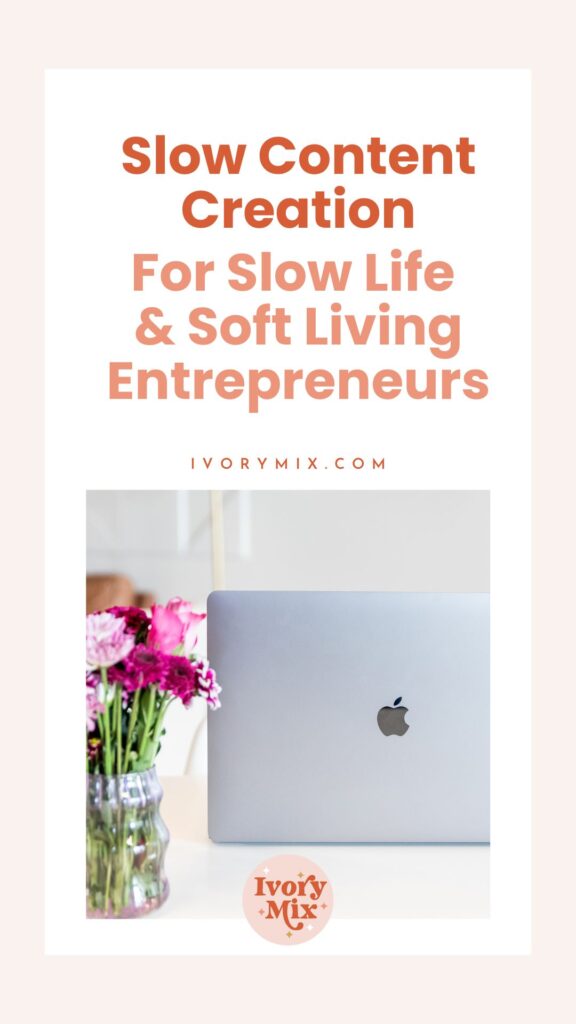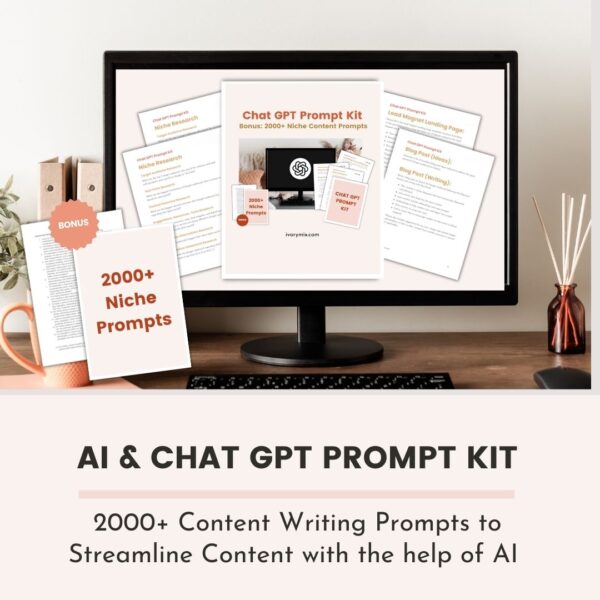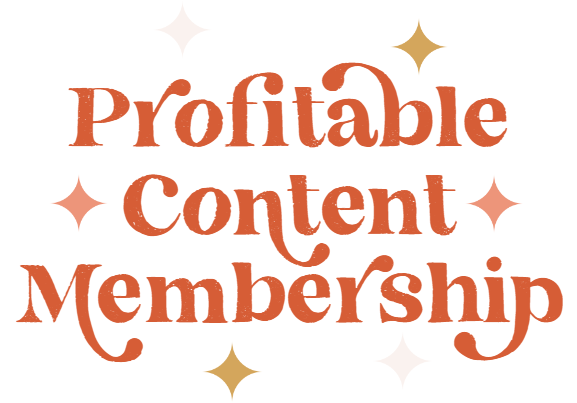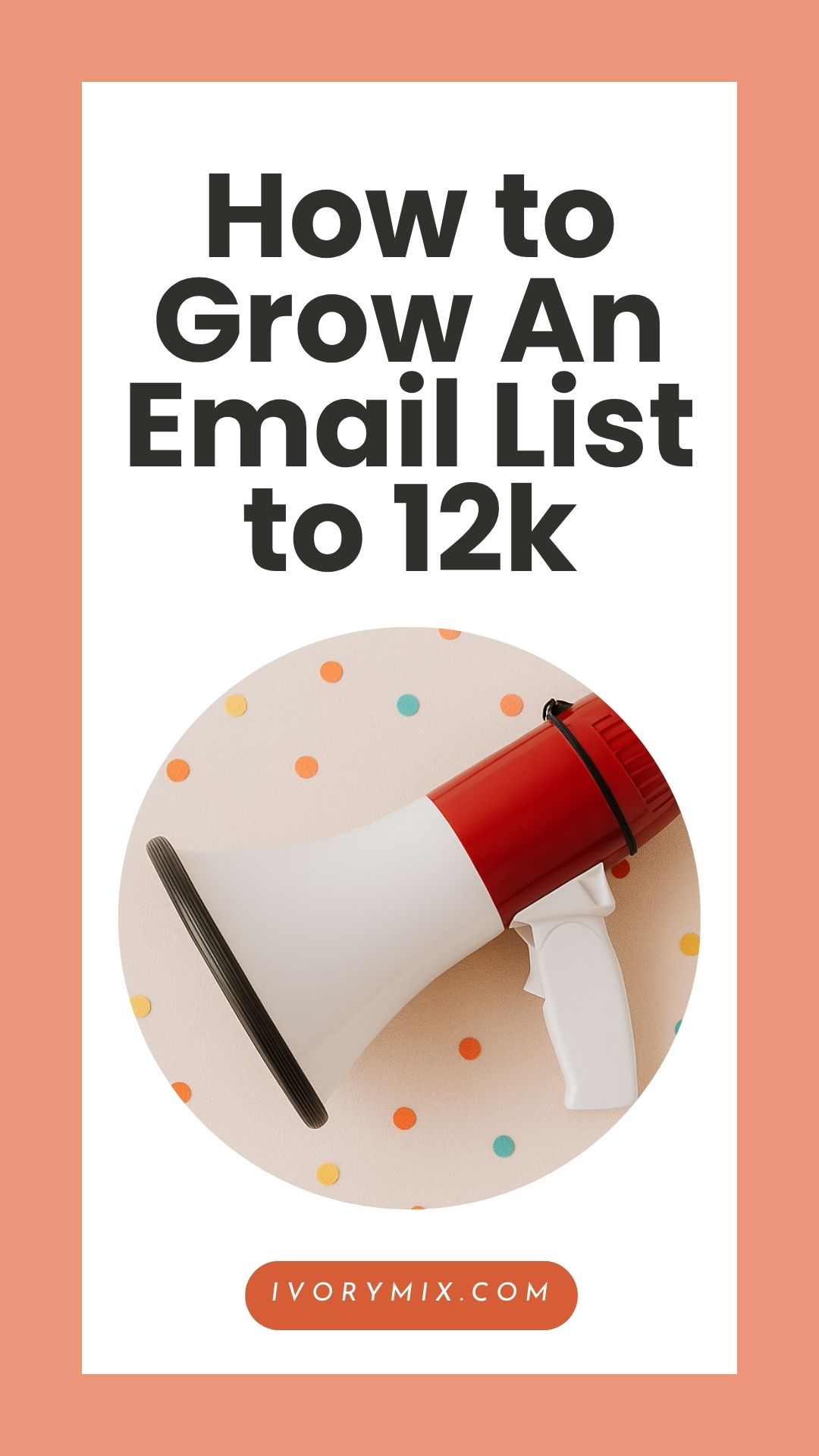get 500+ free images, templates & marketing strategies! You're one click away, Don't Miss It.
How to Develop a Slow Content Creation Strategy for a Soft Business
This post may contain affiliate links. Please read the disclaimer
I don’t know about you, but I’m in my slow living – soft living era right now and just enjoying the freedom to dilly-dally each day.
However, in order to embrace this lifestyle while also running my business and maintaining multiple six-figure revenue during the year, I have had to also develop a more gentle approach to content creation.
That’s where slow content creation comes in…
But, before we dive in, make sure you grab your access to my free templates to save time with content and come back to finish this guide!

What is slow content?
This concept of slow content comes from the philosophies of slow living and the soft life movements. These movements are all about stepping back from the rush, taking good care of ourselves, and finding value in the quieter moments.
Slow content is about taking a moment to really think about what you’re putting out there and why it matters. You’re building something lasting that creates real connections with people. That’s the heart of slow content: making each piece count, really count, for you and your audience. Slow content creation makes it possible to find a happier balance between creating successful content that helps you reach goals and actually enjoying the process too.

Developing Your Slow Content Creation Strategy
If you’re feeling overwhelmed by content creation, I’ve put 6 tips for developing a slow content creation strategy below:
Step 1: Prioritize content that makes the biggest impact
To start this process, it’s a good idea to figure out which content is essential for you? To do this, you’ll want to ask yourself.
“What are the 1 to 3 types of content I create that have the biggest impact on my business?”
This content should be closely aligned with your goals because they will become your essential weekly content types. An easy way to determine these essential content types is to apply the 80/20 Rule: Prioritize the 20% of your content that drives 80% of the impact on your goals.
You can do that by looking at your data and insights on your website and social media platforms. What has given you the best results? For me, I have prioritized the top three content types that do the best at generating new leads and traffic to my website efficiently, nurturing those leads, and making sales/new customers.
I’ve prioritized these 3 content types each week:
- Weekly Blog Post for Traffic and Leads: Central to my content strategy is the creation of evergreen blog content. This serves a dual purpose: to steadily generate leads and sales, and to produce Pinterest Pins that increase the blog’s visibility and reach.
- Weekly Email Newsletter for Engagement and Nurturing Leads: I commit to supporting and nurturing my audience through a weekly newsletter. This is an email written specifically for helping my readers achieve their goals while sharing free and valuable resources with them to do so.
- Weekend Follow-up Emails to Build Authority and Trust (and to Increase Sales): I will often send out weekend follow-up emails to my list too. These emails are written to share my expertise on a subject and include actionable tips that conclude the overall message of the email, but also as part of a call to action to drive sales towards one of my offers.
That said, everyone’s audience and situation is different, so what works for me might not work for you. Take some time to determine what content does best for you, and which 3 you will prioritize over all others.
Step 2: Create a Flexible Schedule and Content Calendar
I used to dedicate specific days during my week for certain types of content creation tasks. (e.g. Monday was for writing blogs, Tuesdays for creating social media content).
On one hand, dedicated days for certain tasks would simplify decision-making and streamline my workflow.
On the other hand, I found that a strict plan and schedule like that was not flexible enough on the days I wanted to sleep in or hop in the car for a spontaneous trip out.
Because, if I missed my scheduled day or time for a task, it would mean I might have to work on a Saturday to “stay on track”, and working on the weekend is something I would love to avoid all together.
What’s the point of owning a business if you can’t enjoy the freedom and flexibility to dilly-dally? That’s what my adhd brain needs and values, anyway.
But, I had no buffer. Don’t be me.. Build yourself a buffer!
I developed a content creation strategy and schedule that now includes flexible buffer time and buffer days. These are semi-planned times and days I can stretch or shrink as I see fit.
These buffer days are for nothing. Nothing is planned to do or scheduled. I certainly can do things. But, this method provides me the freedom to adjust, take a break, or explore outside my home office without pressure to “stay on track”.
Have you ever tried to build in buffer days between content?
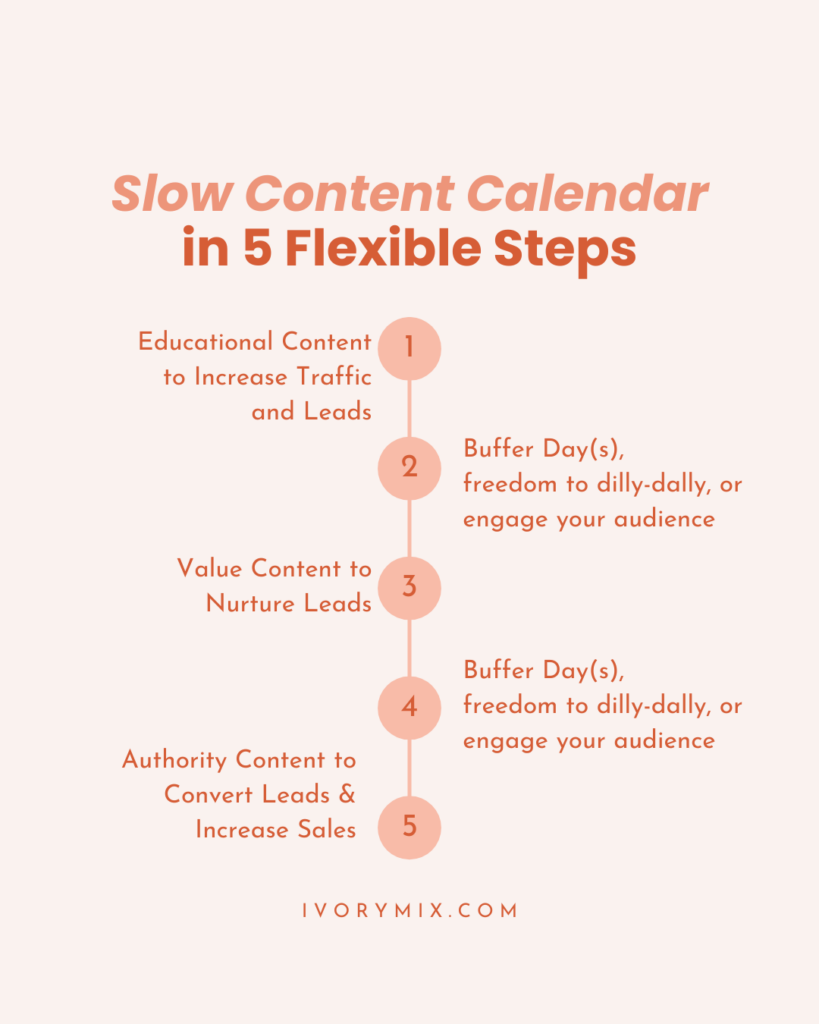
Step 3: Use More of The Same Templates For Content
Here’s a little secret. I have used the same Canva templates for a few years now. They’re simple, match my brand, and save me time.
This one little thing can make a huge difference:
Use the same templates for your content whenever you can.
Every time you sit down to create something new, instead of starting from scratch or looking for a new template to use, just use the last one you used and you’ve got a much faster starting point.
So, go through your own content and find a few templates you really like for your most common types of content. This could be for your blog posts, social media updates, email newsletters, or whatever else you regularly create. (eg. quote style Instagram posts, carousels, etc)
This doesn’t mean every piece of content will look or sound the same. It just means the container for your content is the same. Think about newspapers and how every day they publish content in the same black and white letters on the same off-white paper. They just swap out the actual words and photos for relevant content. This is just the same concept as a newspaper. The idea is to have a consistent structure you can rely on. Freeing you up to focus on the content itself.
Trust me when I say, people don’t even notice your templates. I’ve had conversations with my own audience about this and I’ve found that the only people who ever notice are the content experts, like skilled graphic designers or social media managers. Everyone else I’ve talked to has had no clue I use the same templates all the time. Your every-day audience member is only noticing what your content says and how it makes them feel. That is what is memorable to them. So, if that’s the case, why not save yourself the headache and time and minimize your choices?
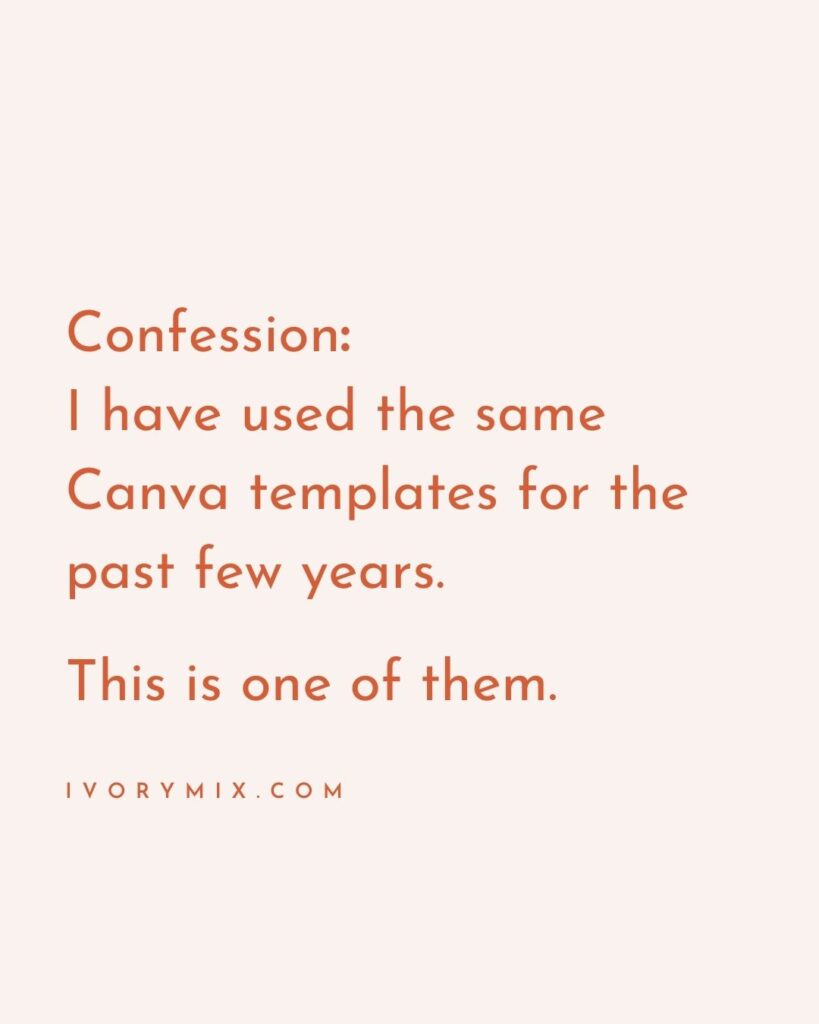
Step 4: Gentle Content Batching
In the spirit of living that slow life, I’ve come to learn that going full throttle with content batching can be pretty daunting and, to be honest, not always doable. And yeah, I’ve been that person urging you to batch a zillion social media posts or blogs in one go. But, creating 30 days’ worth of content in one sitting is not so easy when you are taking things slow!
So I had to rethink my own batching strategy and figure out a new way of still getting “a little” ahead.
Here’s what I came up with in my 5 step Guide to Slow content and Gentle Batching:
Step 1. Batch create no more than two content ideas at one time to allow for a slower, focused, and more gentle process
Step 2. Focusing on enjoying the process of making each piece of content and it’s impact, through the quality of the message and making each piece count, really count, for you and your audience.
Step 3. The goal is to finish & schedule one content idea while leaving the other second content idea in a draft and unscheduled. This way you have a little something planned ahead, saving you a little time when you come back to it.
Step 4. Once you’ve scheduled one, step away from content creation to give yourself a few buffer days between posting and batching content. This allows you to truly give focus to the engagement and topic discussion with your audience.
Step 5. In a few days, you can go back to finish and schedule that second content idea you left in drafts, and repeat this gentle content batching process on two new ideas.
If you want to get a little more from your gentle batching sessions, here are some important tips for maximizing your sessions:
Bonus Tip A) If you need an idea for new content, explore subheadings in your past content to see what you’ve only briefly discussed. You can even copy that subheading and section you wrote about that topic as a starting point for your new expanded content idea.
Bonus Tip B) Create graphics and visuals that serve more than one purpose. For example, you can make a blog post cover image also double as your Pinterest pin or Instagram Story. You can also make images that you insert in a blog that can double as separate Instagram Posts.
After a while of repeating this process, you’ll find yourself with a growing bank of batched content and a more relaxed approach to slow content and gentle batching. The goal here is to not spend ages glued to our desk making content. The goal is to get a little head and be flexible with our time. By adopting this gentler approach, we’re giving ourselves the gift of time and the benefits of getting a little ahead. Win, Win.

If you’re ready to get back on track with content and breathe a sigh of relief now using the slow content method try planning your content using my stress-reducing content planner 🙂
Make sure you Download a copy of my free content planner for your next content creation session!
Step 5: Set Realistic Expectations for Content Creation
if you’ve been releasing a lot of content and are thinking about taking it down a notch, you may want to communicate with your audience about your new slow content creation schedule. Let them know that quality over quantity is your goal, and you prefer to take the necessary time to create valuable content rather than rushing to meet self-imposed daily posting expectations.
I find it helpful to be open and transparent with my audience. This is a personal choice and completely optional but I find it mutually beneficial. If you feel it aligns with your values too, then in one of your next posts, let them in on your new plans for a slow content creation process. Let them know why the change is happening. Your audience will likely appreciate your honesty and may even feel inspired to adopt a similar approach to slow living and the soft life in their own lives.
Step 6: Leverage Ai tools or Join a content membership
Lastly, you can save time in many ways during the content creation process by utilizing Ai tools to do many things like generating content ideas or looking at past blog posts of yours for missed opportunities to repurpose.
But one other fantastic idea is to join a supportive community and content members that prepares your content in advance for you. I’m talking about becoming a member of the Ivory Mix Profitable Content Membership and reach content creation zen 🥰 because you actually receive your whole monthly content planned for you, with all your captions and templates sent directly to your inbox.
Helping you completely reduce stress and save countless hours – but also make profitable content! Ready to streamline your content creation into a more relaxed process and still reach your goals of more traffic, subscribers and sales?
By implementing these strategies, you can take a slower approach to content creation and maintain a healthy balance between being productive and giving yourself the space to explore, rest, and recharge.
Your content relief is within reach. Learn more at ivorymix.com/membership/
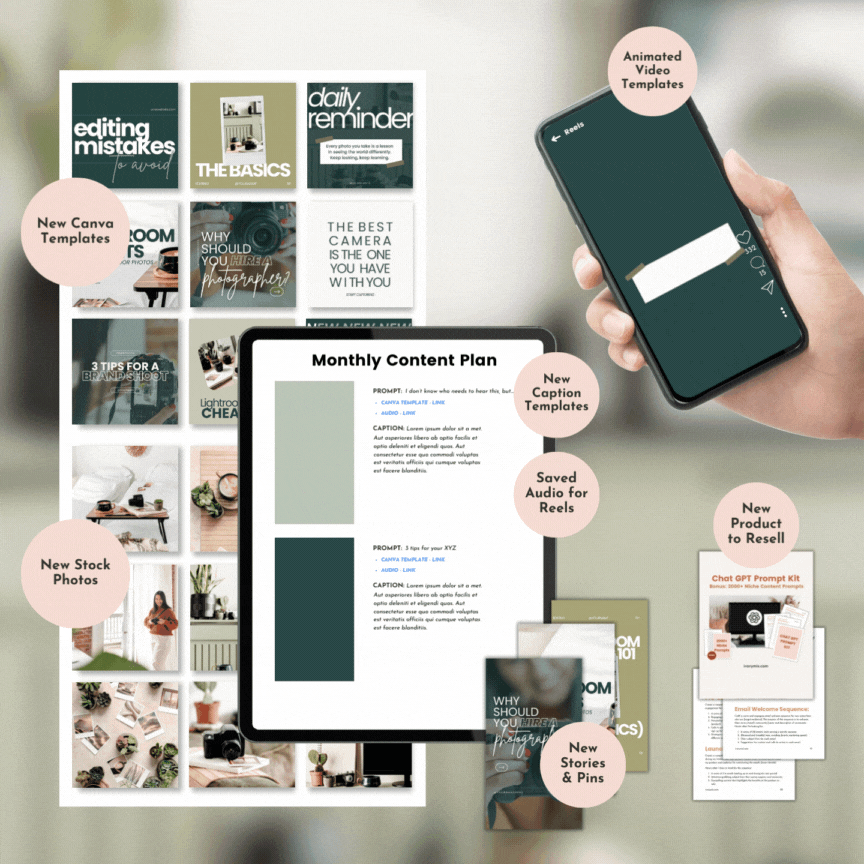
Continue Reading More On This Topic:

Included Free:
550+ Templates, Photos, & Strategies
Get New Free Downloads Monthly
Unlimited Downloads
Special offers & Trends Newsletter
Save and sort your favorites
Access 500+ Free Templates, Photos, & Strategies With A Free Account
Free User Creation for Popup
By creating an account, I agree to Ivory Mix's Website terms, Privacy Policy and Licensing Terms
Already have an account? Log in


